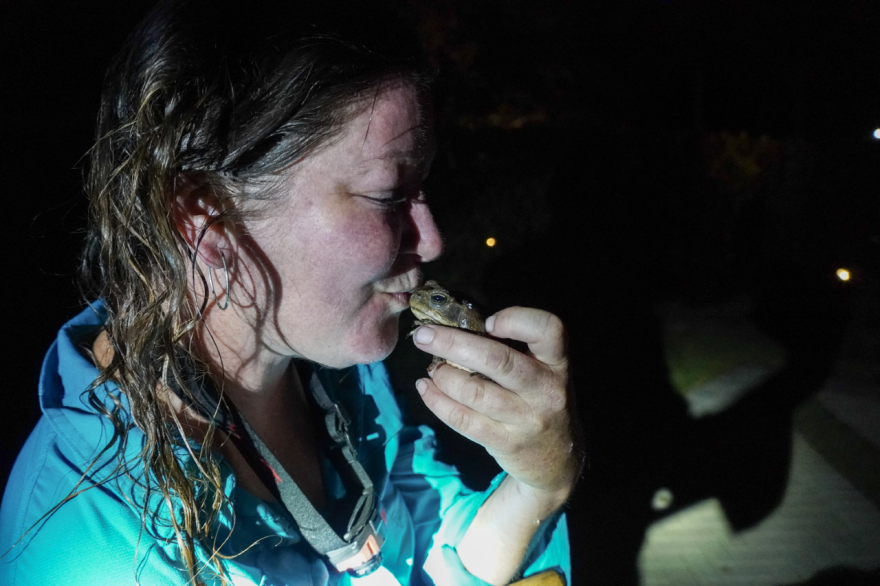A Southwest Florida woman has been ridding cane toads from home yards and communities across the region.
35-year-old Jennifer Southall, an invasive species specialist, has been catching toads for 15 years. She said she catches as many as 100 cane toads a night.
The large and warty amphibians were brought to Florida in the 1950s to eat pests in sugar fields. However, 70 years later, cane toads have become the invaders.
“This is my life; this is my job,” Southall said. “It’s personal to me. I almost lost my dog, and I watched my mother’s dog die in my arms because of these toads. So, that’s why I started my business.”
Southall, said the toads can eat practically anything that fits in their mouths, including frogs and even cat food. The poisonous toads release a white toxin from glands in their backs, which can kill pets and native wildlife. It can also cause skin irritation in humans who handle the toads.
Toad trapper, Jennifer Southall, jumped in a pool -- fully dressed -- to catch a cane toad. Check this story on @wgcu. pic.twitter.com/efhQfwbNdf
— Bruno Halpern (@brunohalpern_) April 17, 2019
After the hunt is over, Southall euthanized her catch. She sprayed them with lidocaine, a numbing agent. Then, she placed them in a freezer. She said this is the most humane way to end the toads’ lives.
Southall said that people shouldn’t use bleach or salt to try to kill them, as those bring intense pain and suffering to the animal.
After a couple of days in the freezer, Southall uses the cane toads as fertilizer on her farm.
“So, it’s a win-win situation because we’re turning a negative into a positive,” she said.

Southall said she regrets that she has to kill them, but it’s the only way to prevent this invasive species to spread even further.
“It’s sad that we have to be put in this situation that we have to kill an animal, and I hate it,” she said. “I love toads; I love every animal, but it is what it is.”







